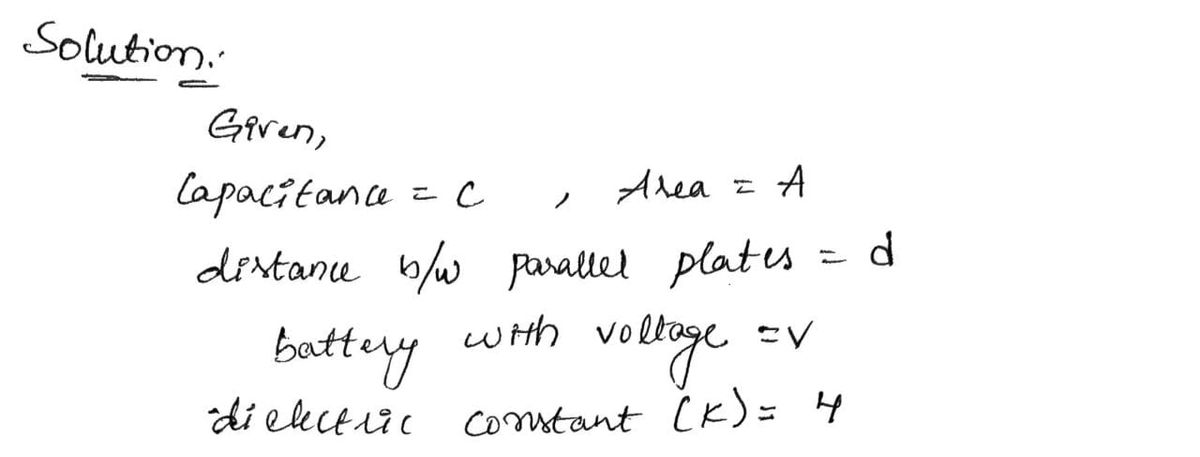A parallel-plate capacitor of capacitance C has plate area A and distance between plates d. The capacitor is connected to a battery with voltage V, fully charged and then disconnected. A slab of dielectric material with dielectric constant 4.0 is then inserted into capacitor, completely filling region between plates. Part (a) After inserting the dielectric, the capacitance is now: 2C C C/4 C/2 4C Part (b) After inserting the dielectric, the voltage across the capacitor is now: 2V V 4V V/2 V/4
Dielectric Constant Of Water
Water constitutes about 70% of earth. Some important distinguishing properties of water are high molar concentration, small dissociation constant and high dielectric constant.
Electrostatic Potential and Capacitance
An electrostatic force is a force caused by stationary electric charges /fields. The electrostatic force is caused by the transfer of electrons in conducting materials. Coulomb’s law determines the amount of force between two stationary, charged particles. The electric force is the force which acts between two stationary charges. It is also called Coulomb force.
A parallel-plate capacitor of capacitance C has plate area A and distance between plates d. The capacitor is connected to a battery with voltage V, fully charged and then disconnected. A slab of dielectric material with dielectric constant 4.0 is then inserted into capacitor, completely filling region between plates.
| Part (a) After inserting the dielectric, the capacitance is now: | ||||||||||
|
| Part (b) After inserting the dielectric, the voltage across the capacitor is now: | ||||||||||
|
| Part (c) After inserting the dielectric, the charged stored in the capacitor is now: | ||||||||||
|
| Part (d) After inserting the dielectric, the electric field in the capacitor is now: | ||||||||
|

Trending now
This is a popular solution!
Step by step
Solved in 3 steps with 3 images









